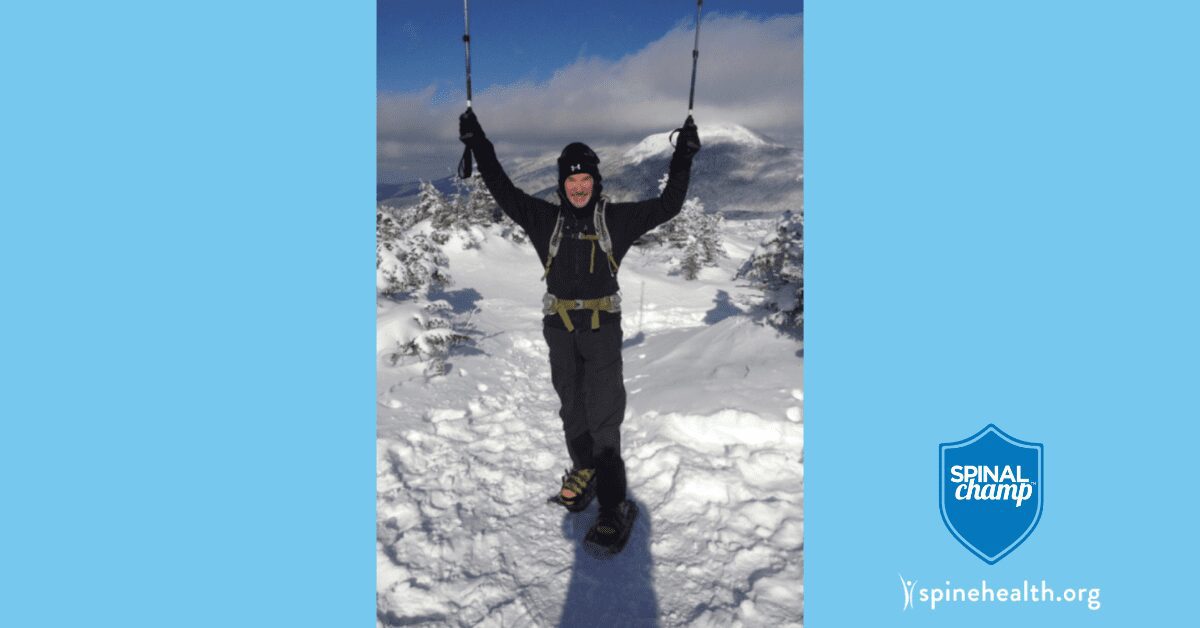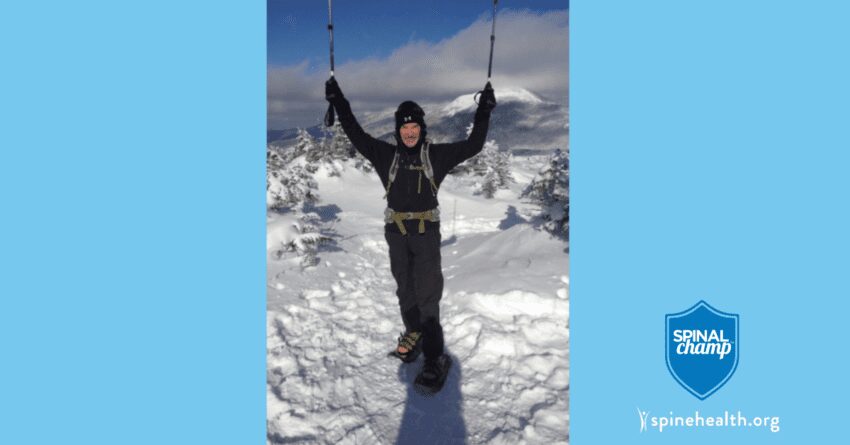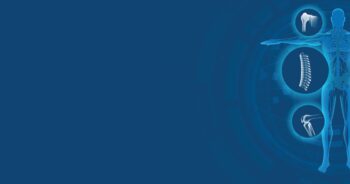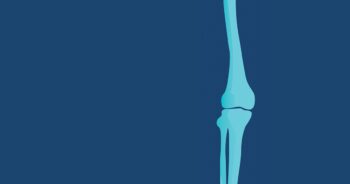
Athletes can suffer particular blows when dealing with back pain or injury. Joseph was one such athlete — a very active guy who was still participating in all kinds of sports at the age of 76. After an injury, he had to deal with the back problems that were plaguing him. This ultimately meant a major surgery, but thankfully, the outcome was a good one! Here, Joseph tells his story in his own words.
Joseph’s Story
In early September of 2012, while training with my ice dancing partner for a national competition, I had a very hard fall, resulting in two broken ribs on my left side. Having broken bones while training at least seven times before, I didn’t think too much about it and continued our training. A few weeks later, we entered four events at Adult Nationals in Las Vegas and won three gold medals and one silver medal. This was particularly satisfying since I was competing in a category open to anyone 25 years of age and older, and I was 76. Much of the credit should go to my partner, who is much younger than I and a spectacular skater.
>>> Check out our Spinal Champion program to share YOUR story
Shortly after this fall on the ice, I began to experience sharp pains in my right sacroiliac joint and down my right thigh. In October it became much more difficult to skate, both in keeping my balance and in having the strength in my right leg to propel myself down the ice. I sought medical advice from the head of the neurosurgery department of a well-known Boston medical facility. Despite treatments with anti-inflammatory medications and physical therapy, the pain in my right hip and leg only became worse. By November it became difficult to walk and difficult to sleep and by December I had to use a wheelchair to cover any distance. Not making progress at the Boston medical facility, I sought consultations with Dr. Michael Hasz at the Virginia Spine Institute as well as a head neurosurgeon of another world-famous hospital. Through these consultations, I learned how badly deteriorated my spine had become, all beginning with scoliosis from birth. My decades of hard use had worn down a number of the discs.
>>>>> Young Spinal Champion Joseph’s Story
There were a number of options discussed to improve my condition, but I elected the most conservative which was a discectomy at L3/L4. The head of neurosurgery at the Boston hospital performed the surgery. He had anticipated a thirty minute operation, but it required three-and-a-half hours since he found very tightly stretched nerves over the disc protrusion, requiring extreme caution to free up. This operation successfully relieved my pain, however, after the surgery I had almost no control over my right leg and the muscles in that leg had atrophied, all due to the stretched and damaged nerves. After discharge from the hospital in early January 2013, I embarked on an aggressive program of physical therapy, determined to regain full use of my damaged right leg.
About six weeks into this program of therapy, I began to have pain in my left sacroiliac joint and left leg. This pain quickly became quite severe. From March through May, I received several epidural injections which provided only short-term relief and I steadily became worse. The neurosurgeon who performed the first operation suggested that four discs be removed and the vertebrae be fused – a very big operation with a long recovery period. This seemed very aggressive and I searched for alternatives that might be less drastic. I flew to Zurich to consult with a leading doctor about disc replacement, using a technology approved for use in Europe, not yet approved by the FDA here in the United States at the time. I also consulted again with Dr. Hasz. The pain in my left hip and leg became increasingly severe and in July I began to experience intense pain in my lower spine. I had to discontinue all physical activity and use a wheelchair for mobility. I also experienced intense pain at night even when I was lying quietly in my bed.
These symptoms drastically changed my life. I enjoy athletic activities immensely. I typically train at ice dancing for one to two hours per day, five days per week, and compete in national and regional competitions. I enjoy skiing and mountain biking, and usually work out in a gym two to three times per week, alternating with rowing on a stationary rowing machine. For a number of years, I have entered the world championship stationary rowing competition in Boston, which attracts competitive rowers from countries all around the world. I also love ballroom dancing and some adagio, involving lifts and drops.
A few years ago I took up mountain climbing. I started out training in the White Mountains of New Hampshire, doing mostly winter climbs in ice and deep snow. This was a valuable opportunity to learn the basic techniques of climbing, use of ropes, ice axes, crampons, overnight camping in cold weather, etc. I then proceeded to train further in the Rocky Mountains, learning to carry a heavy backpack and increasing the weight until I could readily handle 50 pounds through a daylong climb. I then became more adventurous and climbed the highest mountains in Africa (Kilimanjaro), Europe (Elbrus in Russia) and Antarctica (Mt. Vinson). Mt. Vinson was really exciting, since we spent nearly two weeks in Antarctica. Our team of three climbers and a guide spent six days conquering the mountain, with the four of us being all alone, over 250 miles from the nearest Antarctic research station. When we reached the summit, the temperature was 45 degrees (Fahrenheit) below zero, with the wind chill an estimated 85 degrees below zero. When we returned, I learned that at age 75 I was the oldest person ever to summit that mountain.
>>>>>> Check out the ‘Get Back To It’ podcast for new stories from Spinal Champions every month!
My spine problems brought everything to a halt. I still tried to exercise some but was largely unsuccessful. My ice dancing, ballroom and social dancing, skiing, mountain biking, and mountain climbing simply had to stop. I cut way back on international travel and when I did travel, I could only go through the airport in a wheelchair. It was an effort to go anywhere or do anything and I had to cope with constant pain. I was provided painkillers, but the side effects were very unpleasant. I did not know if I would ever regain my strength or mobility and I developed a huge amount of respect and consideration for those who have to put up with such limitations and pain all the time.
Dr. Hasz: “Joseph initially presented with very severe pain that resided in his right hip, anterior thigh, and radiated around the groin and towards the knee and anterior shin as well. These symptoms are very consistent with a pinched nerve or that of acute radiculopathy. His x-rays and MRI, however, demonstrated that he also had scoliosis in the lumbar spine in addition to pinched nerves due to stenosis. Scoliosis is a curve in the back that leads to advanced degenerative changes and subsequent disc herniations and stenosis. The nerves which appeared to be irritated the most were identified at the middle of the lumbar spine at the major part of the curve in his back.
Surgical options included a large surgery with the major goal of realigning the scoliosis as well as decompressing the nerves. An alternative treatment was to perform a minimally invasive surgery, focusing on the areas that appear most consistent with his symptoms, involving a much smaller surgery at the L2/3 and L3/4 levels. This would not significantly decrease the curve in his back, but since he had this curve for many years and remained very active, it was recommended that he undergo the minimally invasive surgery, focusing on what appeared to be his major symptoms at the L2/3 and L3/4 level. Joseph was also aware that this minimally invasive surgery would not prevent him from undergoing the larger surgery to address his degenerative scoliosis if it proved necessary in the future. However, we were very optimistic that this wouldn’t be the case.”
Treatment & Recovery
After much discussion, we agreed to take the more conservative route. My surgeon performed an XLIF, an extreme lateral interbody fusion procedure with posterior instrumentation that removed the deteriorated discs and L2/L3 and L3/4, inserting spacers with bone graft material to fuse the three vertebrae. This operation allowed the nerves to be decompressed through an indirect approach, the mid-portion of the scoliosis to be stabilized, and the nerves to heal.
My nerve pain immediately improved by the day following this operation. Two days later, I had stage two of the pre-planned surgery to install rods for stability from L2 to L4. Following this procedure, I again embarked on a program of physical therapy for rehabilitation, first performing exercises in water and then moving to increasingly more challenging exercises at the PT facility and at the gym.
>>>>>> Arthritis and Spinal Disease: Nancy’s Story
Joseph Today
After being in pain and on the sidelines for about fifteen months, the most important factor improving my quality of life is that I am nearly pain-free. My only residual problems now are occasional pain and numbness in my right knee. However, this pain is fleeting and transitory, and is nothing I would take medication for.
Being essentially pain-free, I now feel very liberated. However, I have to recognize that my spine still has weakness, still has a curve, and is potentially fragile. Dr. Hasz did reduce the curve by about one-third, but he could only do further reductions by doing additional fusions, which neither of us thought was a good idea.
I resumed ice dancing about four and one-half months after the operation. While I don’t skate with the speed, strength, and balance that I previously had, my skating is measurably improving with every week that goes by. I am not doing anything that requires lifting my partner, but I hope to get back to that some day. In the meantime, I am enjoying my skating, and our goal is to compete in the 2014 Adult Nationals, which will be held in Pasadena in October.
I am also back doing ballroom and social dancing again. For now, my dance and life partner only lets me do very small and easy lifts. She is so light that I could do more, but I don’t want her to worry. I am back doing gym workouts but generally using free weights that are 20-30% lighter than before. I have been steadily increasing weight, but I am careful not to load my spine too much. I am also back to stationary rowing. When I first started rowing again, I was just doing 2,000 to 3,000 meters at a slow pace. I am now rowing 5,000 meters (plus warm-up and cool-down) in under 22 minutes. I feel very fortunate to be back into a regular rowing routine.
I don’t know if I’ll ever climb a big mountain again, but at least I can hike and climb up small ones. I proved that to myself just a few weeks ago when I climbed Mt. Pierce in New Hampshire. I climbed in snowshoes in reasonably deep snow and reached the summit in three-and-a-half hours. This was not a serious climb or great time, but it was a big step for me. I am going to keep climbing modest mountains which gets me outdoors and in beautiful scenery.
>>>> Looking to overcome your back pain? Check out our Patient Journey here!
I have now gone skiing four times this year. I used to go down the black diamond trails and enjoyed the challenge of the moguls, however, having been warned to be careful, I now stay on the groomed slopes and concentrate on form; I am having fun doing that. I have also done some road biking and feel perfectly capable of going out on a mountain bike on easier trails.
Guess what else? I can touch my toes, even with the rods in my back. Even better, after my operation I am one and one-quarter inches taller, having regained height I lost from my collapsing spine.
At the first sign of back or neck pain, it is important to learn as much about your options as soon as possible. I would recommend consulting with your regular doctor and with specialists to choose a course of treatment that seems right, weighing the benefits, costs, and risks. It is most important to recognize that such treatments, while not without some level of risks, can bring real relief and vastly improve the quality of your life. This has certainly happened to me and I really think the improvement in my condition is amazing. I never thought I would again be doing the things I am now and feel like I am back in my game!



